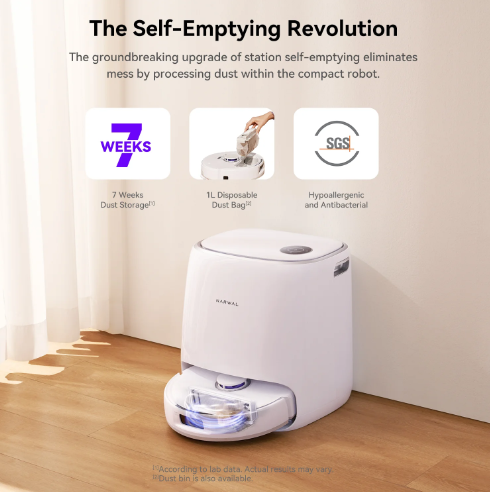Robot vacuums have revolutionized home cleaning, offering convenience and efficiency. However, like any technology, they come with their own set of pros and cons that users should consider before investing in one.
Pros
- Scheduled Cleaning: Programming the vacuum to run on select days or at specific times ensures consistent cleanliness without the need for human intervention. This feature is particularly handy for busy individuals who may not have time for daily cleaning routines.
- Vacuuming Under Furniture: Robot vacuums effortlessly navigate under furniture and reach tough-to-reach spots, eliminating the need for manual maneuvering. They efficiently clear dust and debris from areas that are often neglected during traditional vacuuming sessions.
- Spot Cleaning Mode: Many robot vacuums offer a spot cleaning mode, allowing users to target specific areas with spills or messes. This focused cleaning approach saves time and energy compared to cleaning the entire house for minor incidents.
- Dual-functionality as a Mop: Some advanced robot vacuums also serve as automated mops, providing a comprehensive cleaning solution for both hard floors and carpets. While the mopping capabilities may vary, it adds versatility to the device’s functionality.
Cons
- Vacuum-proofing the House: Small objects like socks or pet toys can get stuck in the robot vacuum, requiring homeowners to ensure the house is “vacuum-proof” before initiating cleaning cycles.
- Device Getting Stuck: Variations in size and shape among robot vacuum models can result in some devices getting stuck under furniture or wedged in tight spaces. This issue may disrupt cleaning cycles and require manual intervention.
- Difficulty Finding Charging Base: Despite the automatic return-to-base feature, some robot vacuums struggle to navigate back to their charging stations, leading to stranded devices with drained batteries.
- Frequent Bin Emptying: The small size of the dust bin in robot vacuums necessitates frequent emptying, especially in homes with pets or high levels of debris. This adds to the maintenance requirements and interrupts cleaning sessions.
- Incomplete Cleaning Coverage: While robot vacuums excel at automated cleaning, they may struggle to reach certain nooks and corners, necessitating occasional manual vacuuming for thorough cleanliness.
- Noise and Duration: Robot vacuums may run for extended periods, emitting continuous noise that can be disruptive, especially in quiet environments. Additionally, their slower pace compared to traditional vacuums results in longer cleaning durations.
- Cost: Despite their convenience, can be pricey, with entry-level models starting around $250. This cost may deter budget-conscious consumers, especially considering the need to retain a traditional vacuum for comprehensive cleaning.
Conclusion
While robot vacuums offer remarkable convenience, addressing both the pros and cons is essential for informed decision-making. As technology evolves, future advancements may mitigate some of these drawbacks, bringing us closer to the idealized vision of fully autonomous cleaning systems.
Until then, users must weigh the benefits against the limitations to determine the suitability of robot vacuums for their households.
Read More : jobzvice.com




